Our Verdict
The ultimate memory for users looking for the best combination of performance and ease-of-use... with none of compatibility hassles that can happen with the faster kits.
For
- Fast AND low latency
- Simply gorgeous
Against
- Expensive
- Not widely available
PC Gamer's got your back
If you’ve ever been in the market for some fast RAM, you’ve surely taken a look at G.Skill’s kits. The company is well known for its highly binned memory and overclocking prowess. The G.Skill kit we have for review today comes with a truly impressive specification. At DDR4-4000 with 15-16-16 timings it’s probably the perfect combination of high frequency, low timings and broad platform compatibility. It does require 1.5V to operate at that spec—which is at the high end for a default voltage—but fear not, it will be able to run year after year.
Model - F4-4000C15D-16GTRS
Memory type - DDR4
Capacity - 16GB (8GB x2)
Rated speed - 4,000MHz
Rated latency - 15-16-16-36
Voltage - 1.5v
The base Trident Z design hasn’t changed all that much in recent years, but it's never looked as good as this. The modules demand to be shown off in a windowed case and look every bit premium kit with their stunning mirror-like silver or gold finish. Atop the modules are sparkling crystalline light bars with the requisite RGB goodness and the colors are especially bright and vibrant. Some might even say it’s too bright. You will squint if you glance at them in a darkened room.
As always, looks are subjective, but it’s difficult to describe this kit as anything other than stunning. The mirror finish might be a fingerprint magnet, but that’s only if you really must touch it, not that there’s anything wrong with that! The silver version we have here would add a touch of class to almost any build.
G.Skill has its own RGB app, simply called the Lighting Control Software. A quick play revealed it works well, enabling control of the eight LEDs on each module with a range of effects. There’s a brightness control too, which we’re happy to see as at default the kit is very bright indeed, especially at night time.
If you’re looking at a kit like this, you want it to perform, not just look good and the benchmarks reveal some interesting information. Bandwidth tests easily show the relative benefits of running faster memory (well, duh) but really that’s not what’s important. What matters is does faster RAM makes a real difference to your PC experience. The true answer is both yes and no, depending on what kinds of tasks you perform and the individual application or game.
Generally, file compression sees a big benefit. Rendering doesn’t, but then some encoders, like our Handbrake test, show very decent gains. The gaming benefits when using faster RAM, however, are specific to the individual game. Some see benefits while others gain nothing. If you’re interested in the highest FPS, then you’ll definitely want to add some fast RAM to your system, otherwise you could be leaving a chunk of performance on the table.
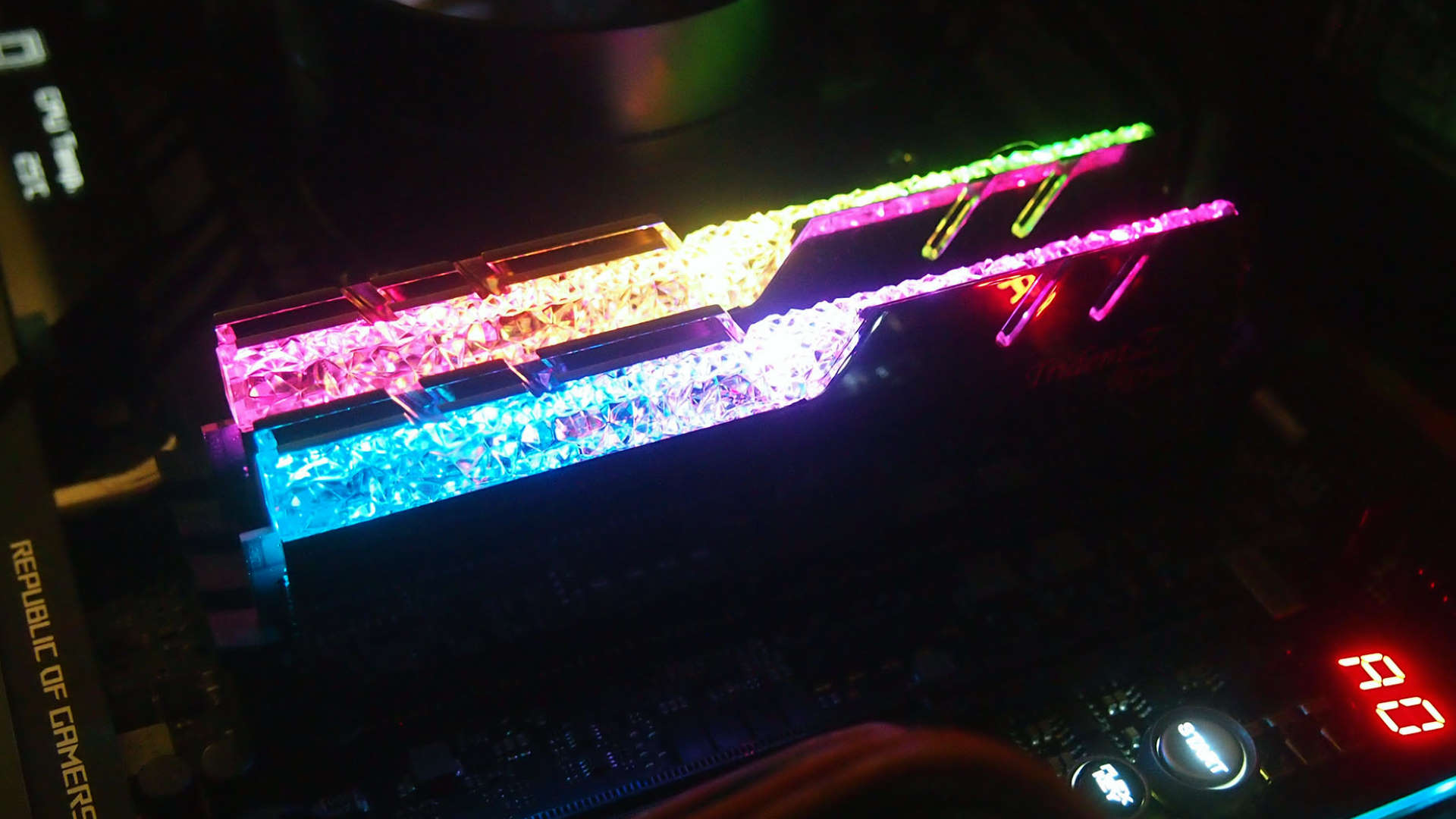
Productivity benchmarks





Gaming benchmarks

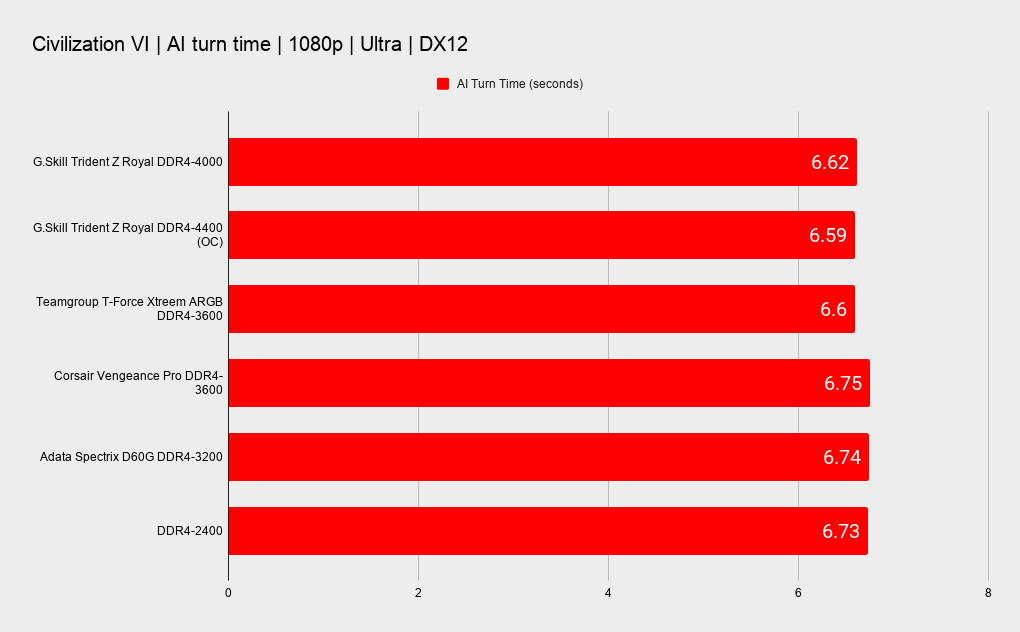



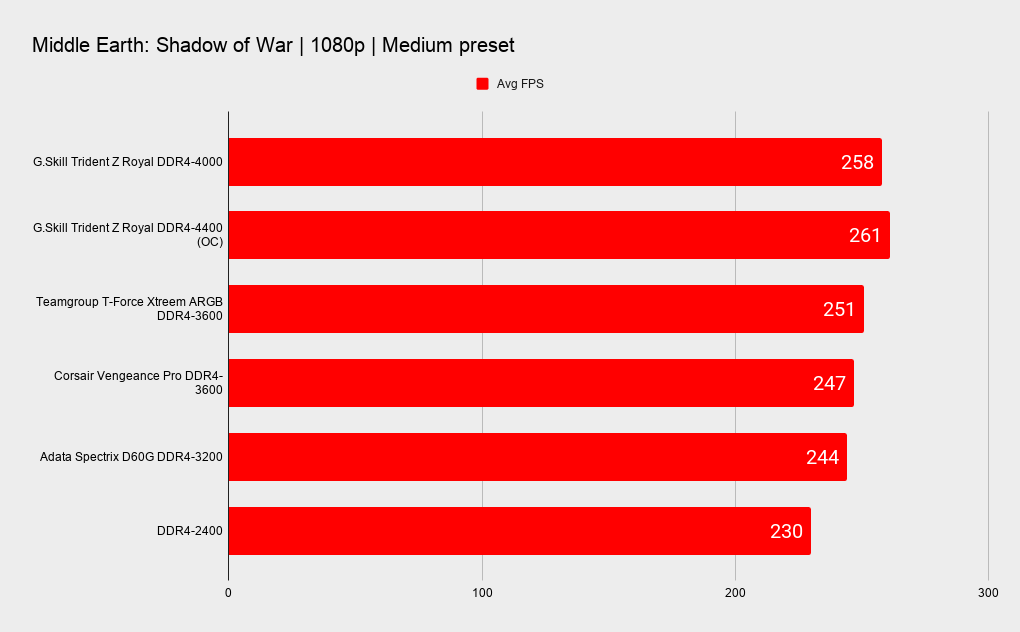
This G.Skill Trident Z Royal kit comes equipped with the highly regarded Samsung B-Die IC, known for its ability to scale with voltage. If you have a good CPU memory controller and a capable motherboard, you’ll be able to push this kit well beyond its rated specification.
Memory overclocking tends to be at its best on motherboards with just two DIMM slots, such as the likes of the overclocking-oriented Asus Maximus XII Apex, or many of the high-end mini-ITX motherboards. AMD’s Ryzen 3000 series can also accept very fast RAM, but you’re better off sticking to DDR4-3600 with AMD because of the Infinity Fabric characteristics. Go past 3,733MHz with Ryzen and actual performance can go backwards. We’ll go into that further in our upcoming DDR4 gaming deep dive.
Back to the G.Skill Trident Z Royal memory itself, we’re confident in saying that this is a highly binned kit, and one that will definitely appeal to those aiming to extract every last drop of performance out of a system with components that warrant such a kit.
We were able to hit DDR4-4400 at the stock 1.5v by changing the CAS latency from 15 to 16. DDR4-4400 at 16-16-16-36 is a pretty damn sweet result without any voltage increase. It’s true that 1.5V is higher than the typical 1.35V you’d see with mainstream kits, but we have no problem running a B-Die module at 1.5V 24/7. It is after all, the default voltage of this silicon!
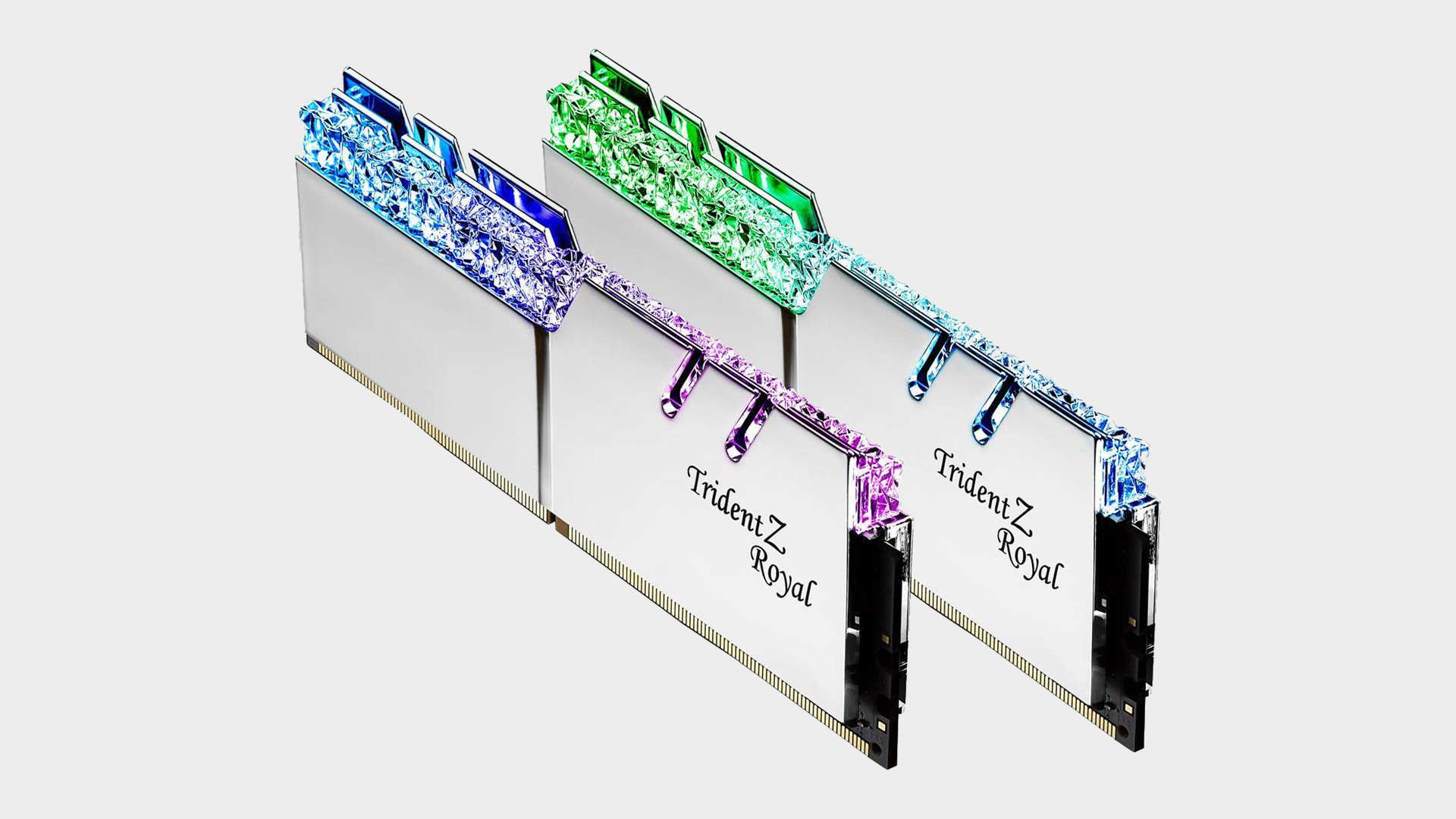

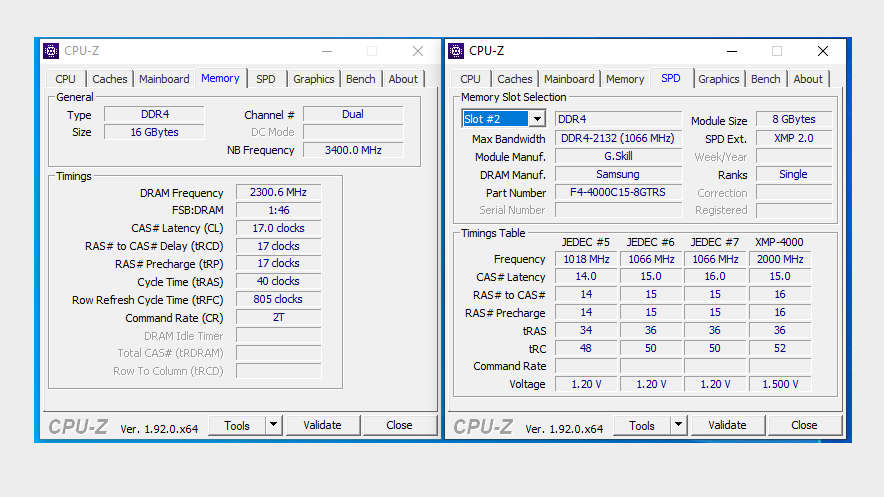
We were able to hit DDR4-4600 without going anywhere near crazy on IMC voltages, but such a speed is not stable on our ASRock test motherboard. The ASRock Z490 Taichi officially supports only a handful of kits above 4400 MHz on its qualified vendor list, none of which are Samsung based. We’ll be trying again on a Maximus XII Apex very soon as part of a deep dive into gaming performance with very high speed memory, so keep an eye out for that!
How do we rate a kit like this? For some users, it makes no sense. You could buy a decent 3200 MHz kit and still enjoy awesome gaming performance. But, if you’ve got a high end gaming rig, for example an overclocked 9900K, or 10900K with an RTX 2080 Ti, then you’ll want to pair fast memory with it to maximise the performance of your system. The G.Skill Trident Z Royal 4000 C15 kit will be a perfect match.
It’s both a fantastic XMP set-and-forget kind of kit, but also one you can overclock the hell out of. Yes, there are existing 4800 or even 5000MHz kits, but those won’t run at spec in the majority of systems even with serious tweaking. They also cost a lot more and have much looser timings, which always means some trade off.
G.Skill has created a contender for the best all round DDR4 memory on the market. Some users will prefer a 2x16GB kit, but if you’re a gamer or overclocker looking for something top shelf, you really need to take a look at this royally classy G.Skill kit. You’ll find cheaper RAM, but you won’t find much better.
The ultimate memory for users looking for the best combination of performance and ease-of-use... with none of compatibility hassles that can happen with the faster kits.

Chris' gaming experiences go back to the mid-nineties when he conned his parents into buying an 'educational PC' that was conveniently overpowered to play Doom and Tie Fighter. He developed a love of extreme overclocking that destroyed his savings despite the cheaper hardware on offer via his job at a PC store. To afford more LN2 he began moonlighting as a reviewer for VR-Zone before jumping the fence to work for MSI Australia. Since then, he's gone back to journalism, enthusiastically reviewing the latest and greatest components for PC & Tech Authority, PC Powerplay and currently Australian Personal Computer magazine and PC Gamer. Chris still puts far too many hours into Borderlands 3, always striving to become a more efficient killer.


